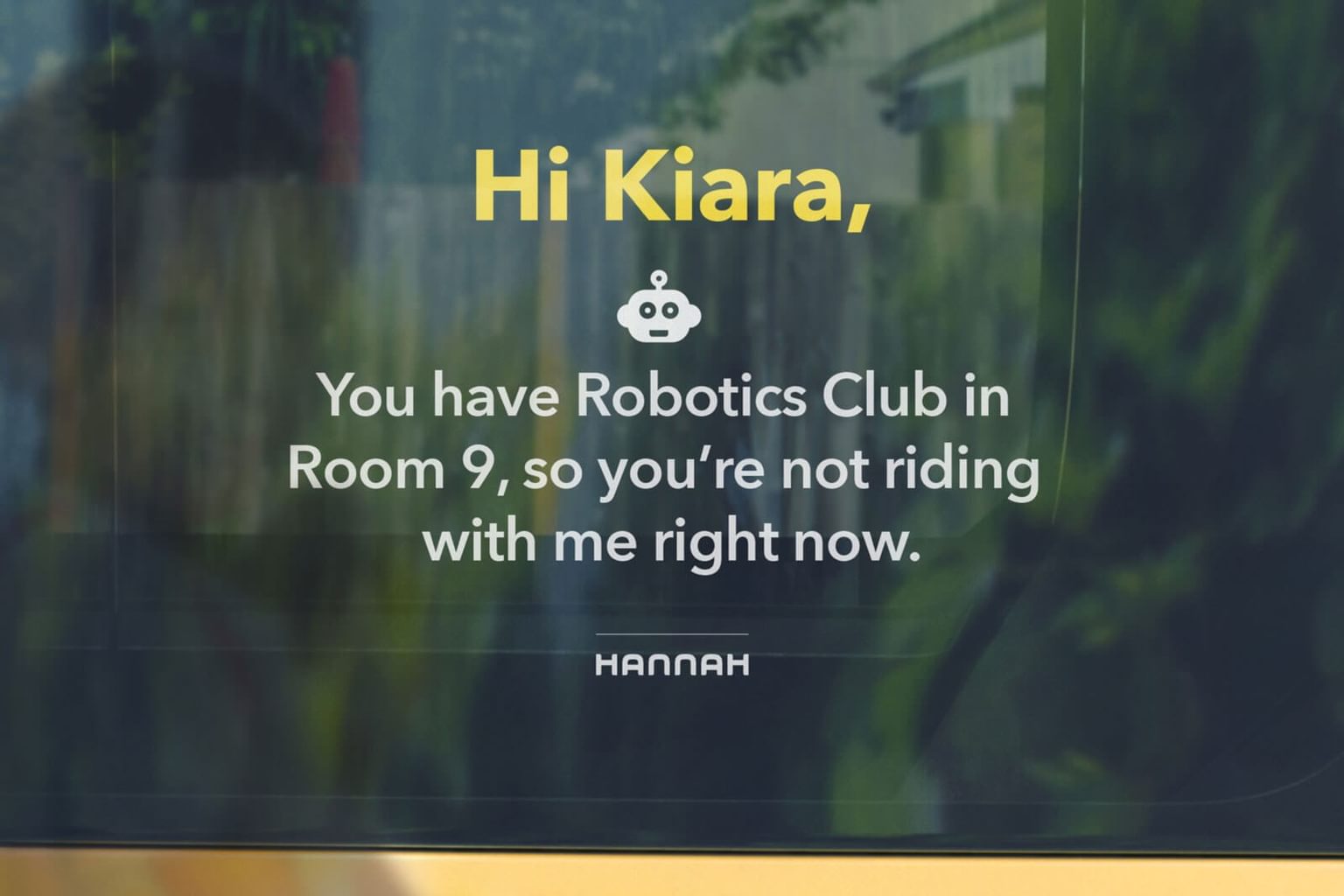
Case Study
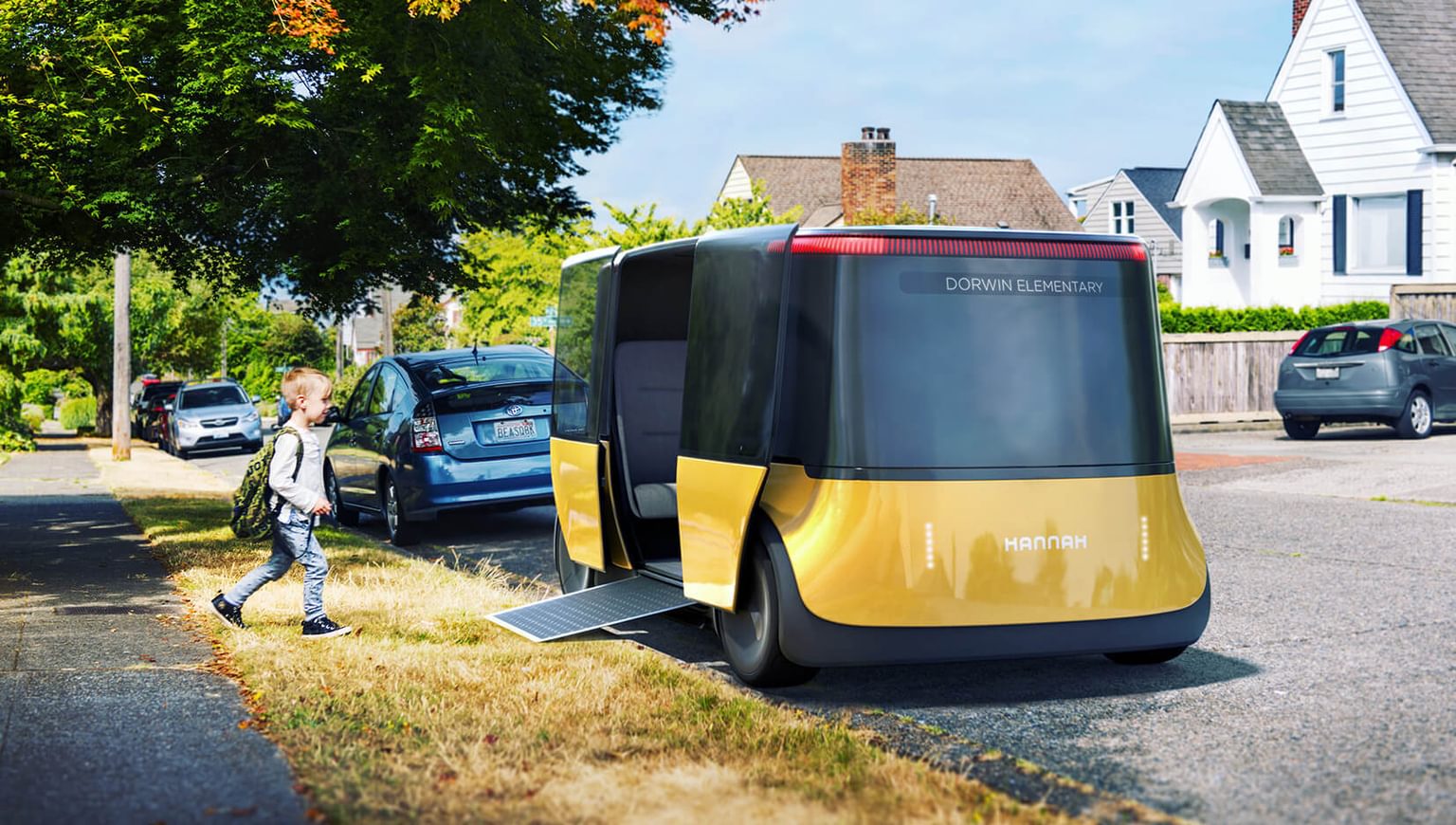
Teague Featured Concept | Hannah | Transit Autonomy
Category
Expertise
Tech companies and carmakers are reimagining the future of our daily commutes. But what about the future commutes of our kids? What will happen to the iconic yellow school bus when vehicles become autonomous?
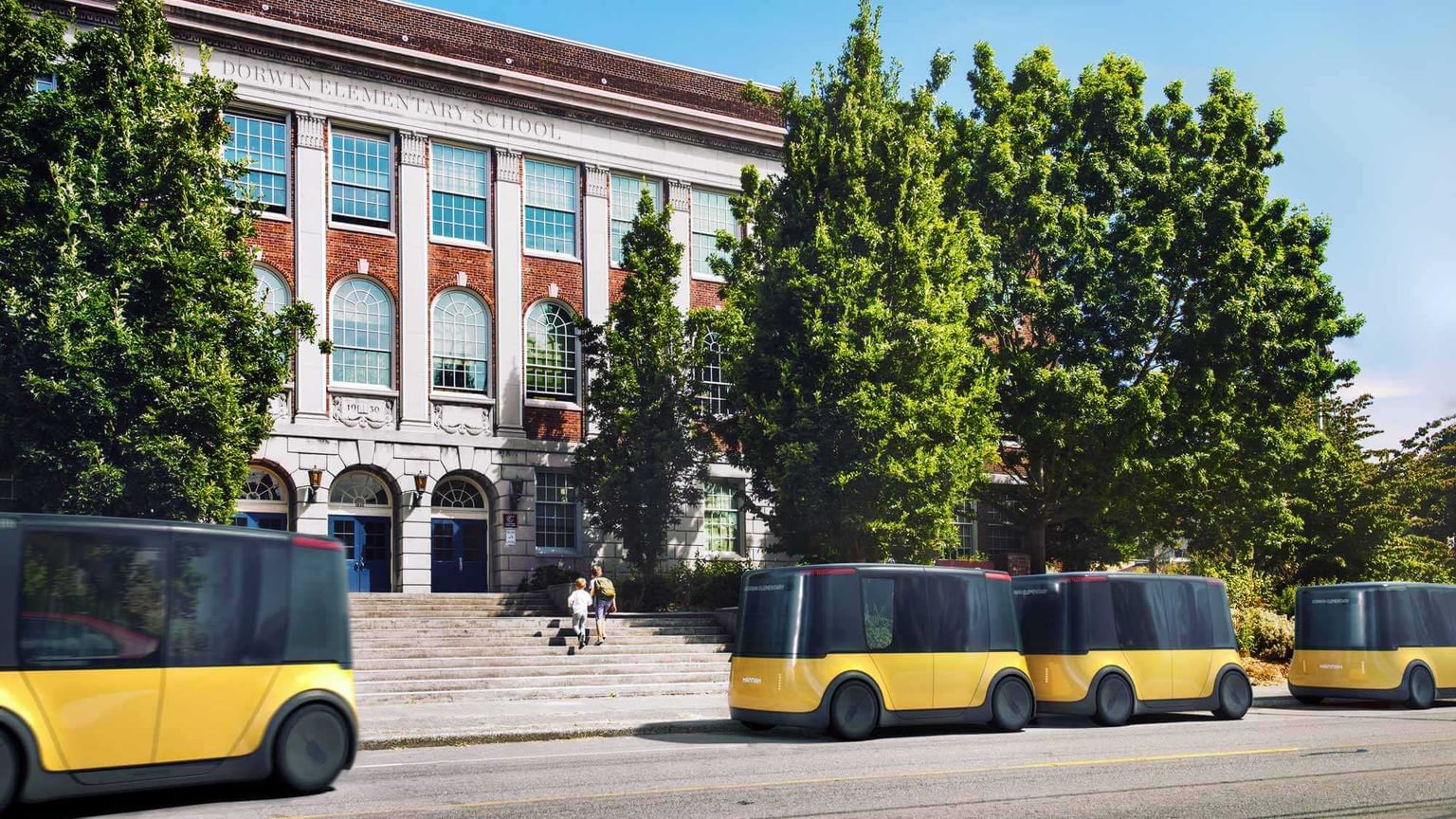
CHALLENGE
The emerging era of autonomous vehicles is widely envisioned and discussed by technologists, designers, policymakers, city planners, insurers, ethicists, and more. As a result, people are growing increasingly comfortable with the idea of driverless transportation, but what about trusting autonomous cars with our most precious cargo?
Teague’s Hannah is a conceptual reinvention of K-8 transportation that illuminates the operational, financial, and even social innovations within an entirely new approach to student transportation in the age of autonomy.



APPROACH
As an introduction, it’s essential to note that autonomous transportation is more than just driverless transportation. Autonomous transportation is fundamentally about connected vehicles; that is, vehicles that are connected to other vehicles, connected to infrastructure, and connected to data and users in ways that enable dynamic decision-making. Connected is the backbone for everything smart about an autonomous vehicle and how it interacts with other vehicles and the world at large. With this emphasis on connected foremost in mind, Hannah is designed around three core principles that we believe are imperative to the future of student transportation.
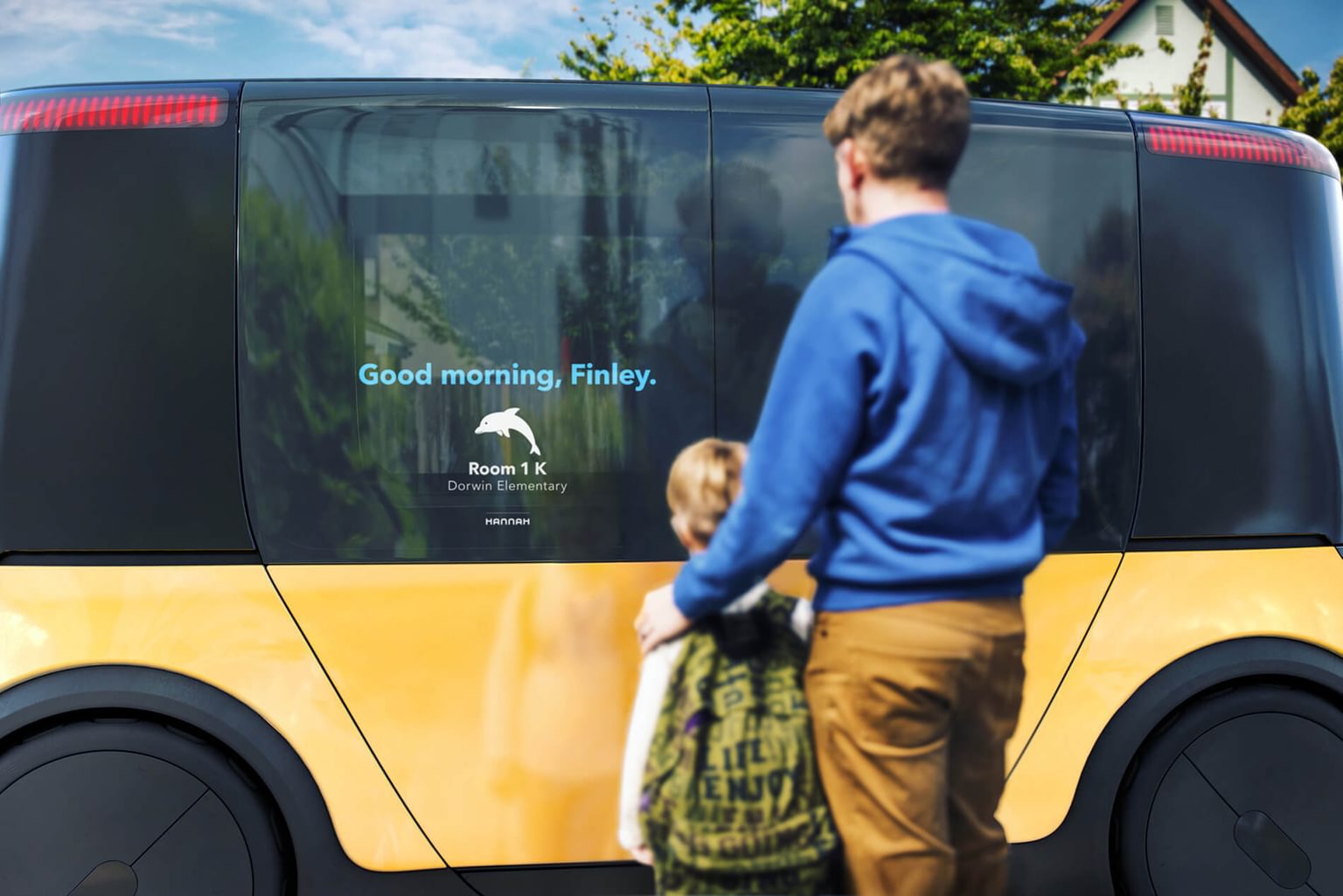
SOLUTION | PRINCIPLE 01
There are unintentional injustices built into the hub-and-spoke routes of public transportation, and these injustices are especially prominent in school bus systems. Today, stops are organized to gather many kids at fixed points that are serviced by very large vehicles in a fixed sequence. Depending on where their stop is along the sequence, some kids may have to wake up earlier than their peers who are picked up later. Or, some parents may even have to leave for work later than other parents with kids earlier in the sequence. This may sound trivial, but even 15-minute differences in the mornings and afternoons of each school day add up to hundreds of hours of time across a school year that are gained or lost inequitably.
Hannah makes significant departures from this type of system. First, the fleet isn’t comprised of 50+-seat behemoths, but instead much more communal six-seaters. This size of vehicle subverts the hub-and-spoke system of routing altogether, enabling Hannah vehicles to operate point-to-point, picking up every kid directly in front of their residence. Why is this important? Hub-and-spoke routes are not only inconvenient and unfair, they’re also unsafe because the centralized stops invariably require kids to cross streets. This puts them at risk from other vehicles during busy morning and afternoon commute times. But it also puts them at risk from school buses themselves. According to NHTSA, “nearly two-thirds (64%) of the school-age pedestrians fatally injured in school-transportation-related crashes were struck by school buses or vehicles functioning as school buses (2006 to 2015).” So, while federal regulations now require that school buses feature stop-arms and other safety equipment, risks remain for kids as they cross in front of- or behind buses and other vehicles. Hannah eliminates this scenario entirely by making every pick up and drop off on the curb-side of a kid’s home or school. To do this, Hannah vehicles don’t actually have a front or back “end”; they are palindromic—thus the name, “Hannah”—which allows them to move forward and backward, and left and right, seamlessly, with sliding doors and ramps on both sides. This ambidextrousness also streamlines routing and re-routing to optimize its point-to-point approach since a Hannah vehicle never has to take a turn to get on the “right” side of the street.
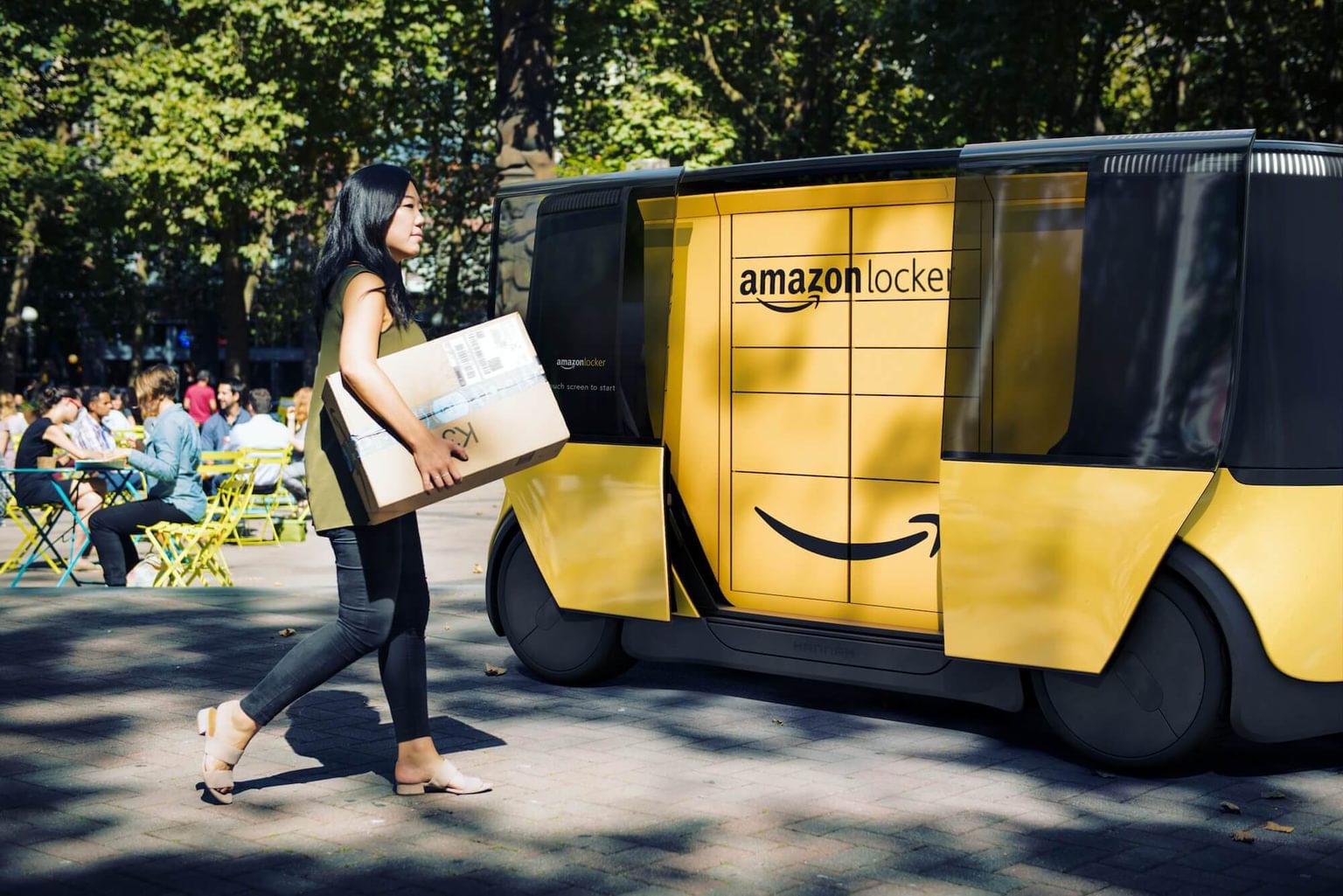
SOLUTION | PRINCIPLE 02
Contemporary school bus fleets are typically parked in off-site yards during off-hours, which is where they actually spend most of their time. In reviews of sample routes for an elementary school in the Seattle area, we found that these school buses travel about six miles from the bus yard to get to their first stop. (As a side note, this is a much smaller distance than those in school districts with more sprawling geographies than Seattle’s.) Beginning with their first stops for students, these routes are less than two miles start-to-finish and have students onboard for only 15 minutes. Assuming that each bus operates two additional, similar routes for middle school and high school students (a three-tier practice used by many districts), this means that these school buses are, conservatively, only transporting students just 6% of the time during most 24-hour periods. While utilization rates obviously vary between districts, these lost hours have costs for school districts since they’re paying for all that “deadhead” mileage back and forth to bus yards. These bus yards are real estate and facilities that they also have to pay for. And, school districts are a lot like private car owners in that buses are expensive machines that require regular maintenance and yet sit unused most of the time. Bus drivers are also penalized in this inefficient scenario, since most drivers work a split shift—making runs in the mornings and afternoons, with a midday break that’s often hard to fill with additional employment. The prospect of working mornings and afternoons—but not in-between, all while typically earning less than other drivers with commercial driver’s licenses —helps explain why there is a nationwide shortage of bus drivers.
Hannah challenges this broken status quo by solving for deadheading, vehicle downtown, and driver shortages. Instead of deadheading to and from bus yards, Hannah vehicles are designed to stay in the neighborhoods they serve, doubling as roving Amazon lockers, Starbucks delivery vehicles, or charitable donation bins (just to name a few) during the mid-day- and evening hours when they’re not transporting students. This turns the vehicles into potential profit centers rather than cost centers, all with minimal labor involved. Drivers who are under-employed in current systems can potentially be fully employed as fleet managers who remotely monitor Hannah vehicles transporting students, and then facilitate their quick transitions into other uses. How quick? With interiors ready-made for standardized lockers that are simply rolled into place and swappable panels (or electrochromic paints now being developed) for transforming the exteriors, these transitions can be accomplished in minutes.
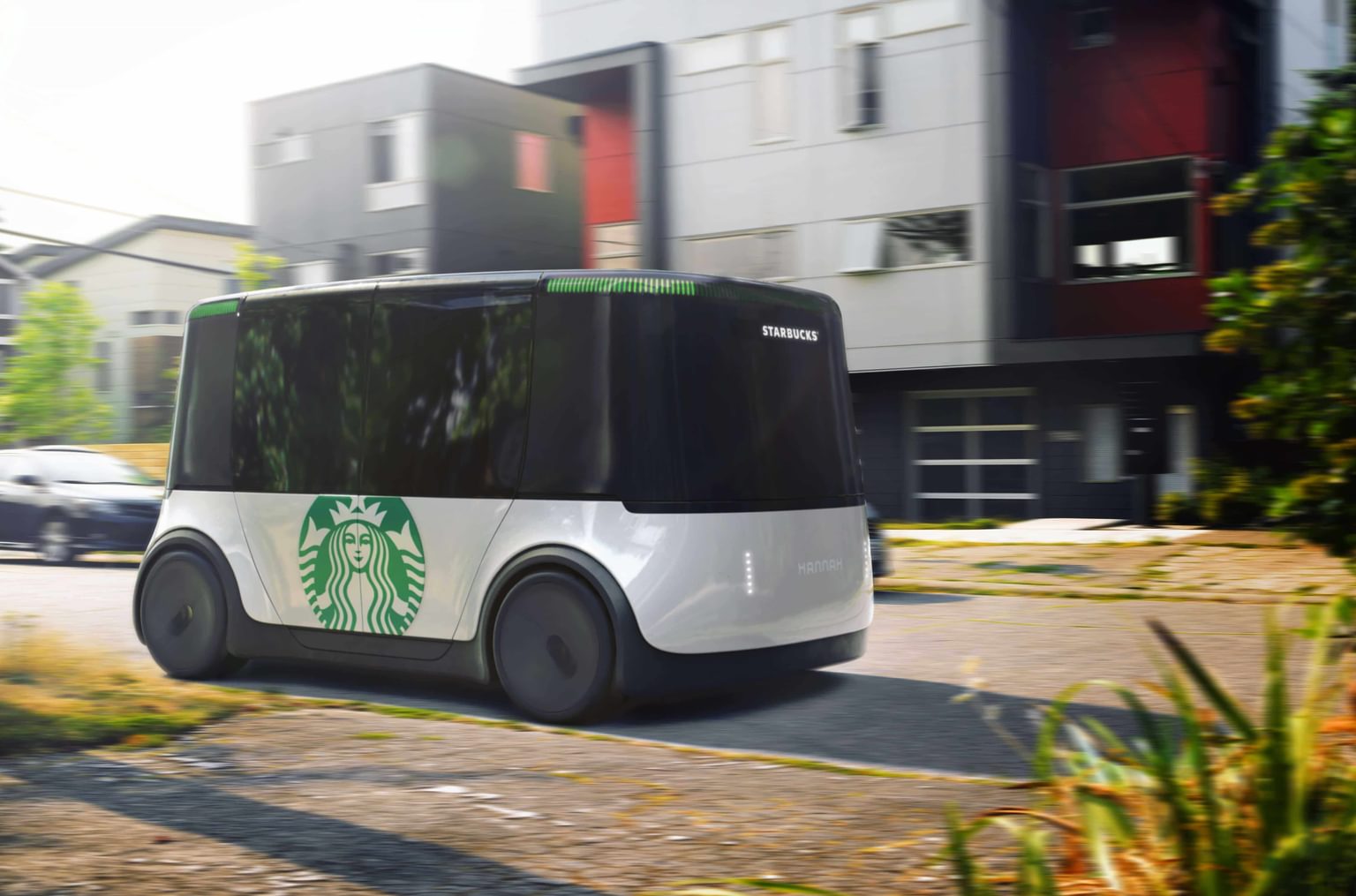
SOLUTION | PRINCIPLE 03
There’s an elephant in the room here: Hannah is driverless, and driverless means there’s no supervision, right? While it’s true that Hannah vehicles are driverless, Hannah actually delivers better supervision than today’s school buses. To understand this, consider whether it’s actually possible for a driver to supervise 50+ kids seated in rows of seats a dozen deep while simultaneously driving. The answer is most likely not. And yet we are conditioned by this illusion of supervision, so much so that a driverless school vehicle might feel like a non-starter to some. However, any fears will eventually be quelled, because the supervisory powers of Hannah’s connected vehicles far surpass the overtaxed pair of eyes and ears on today’s school buses.
As already mentioned, Hannah vehicles are six-seaters. In addition to enabling point-to-point routes, this right-sizes the number of kids in any one vehicle to be supervised in the first place. Next, Hannah’s artificial intelligence integrates with outward-facing door cameras to control access to the vehicle through iris scanning technology (which already features in existing ATMs and smartphones, so it’s no longer science fiction). Interior cameras give Hannah the opportunity to prompt verbalized reminders about seat belts or forgotten items, and also enable remote fleet monitors to see what’s happening onboard in real time. That’s important, because it allows for immediate intervention in case of an emergency. In sharp contrast to a human driver, Hannah always knows who should be onboard, where they’re picked up and dropped off, and each kid’s unique after-school schedules. Hannah knows all of this and can simultaneously communicate with the students onboard and remote fleet monitors, as well as parents and educators wherever they are. Compared to one forward-facing human, Hannah is always on, always connected, and always ready to act. All of this adds up to a safer, more nurturing environment for students that’s more akin to a carpool. Here, six is greater than 50.
